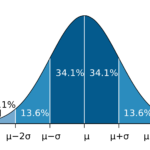Experimental designs play a crucial role in scientific research, allowing researchers to systematically investigate relationships between variables and draw meaningful conclusions. Among various experimental designs, this blog will delve into the intricacies of ANOVA (One-way, Factorial), Randomized Block Designs, Repeated Measures Design, Latin Square, Cohort studies, Time series, MANOVA, ANCOVA, and Single-subject designs. Each design brings a unique perspective and methodology to the table, offering researchers diverse tools to address specific research questions.
- ANOVA (Analysis of Variance):
ANOVA is a statistical method used to analyze the differences among group means in a sample. There are two main types of ANOVA – One-way ANOVA and Factorial ANOVA.
- One-way ANOVA: This design is used when there is one independent variable with more than two levels. It helps determine if there are any statistically significant differences between the means of the groups.
- Factorial ANOVA: In this design, there are two or more independent variables, allowing researchers to examine the effects of each variable individually as well as their interactions.
2. Randomized Block Designs:
Randomized Block Designs are an extension of the basic ANOVA. They involve dividing participants into blocks based on certain characteristics and then randomly assigning treatments within each block. This design helps control for extraneous variables that may affect the dependent variable.
- Repeated Measures Design:
In Repeated Measures Design, the same participants are used for each treatment or condition. This eliminates individual differences and increases the study’s sensitivity to detect treatment effects.
- Latin Square:
Latin Square is a design used to control for order effects and sequence effects in experimental research. It involves systematically varying the order in which treatments are administered to different groups, ensuring each treatment appears in each position.
- Cohort Studies:
Cohort studies are observational designs that follow a group of individuals over time, tracking their exposure to certain factors and assessing outcomes. These studies are valuable in establishing causal relationships between exposures and outcomes.
- Time Series:
Time series designs involve collecting data on the same subjects over a period, allowing researchers to observe trends and changes over time. This design is commonly used in economics, medicine, and environmental studies.
- MANOVA (Multivariate Analysis of Variance):
MANOVA extends ANOVA to multiple dependent variables. It assesses whether there are any statistically significant differences between the means of three or more groups in terms of two or more continuous dependent variables.
- ANCOVA (Analysis of Covariance):
ANCOVA combines elements of ANOVA and regression. It helps control for covariates (variables that are not of primary interest but may affect the dependent variable) while assessing group differences.
- Single-subject designs:
Single-subject designs are experimental designs used in behavioural research. They involve studying the behaviour of individual subjects over time, often in applied settings. A-B designs, multiple baseline designs, and reversal designs are common examples.
Conclusion:
The realm of experimental designs is vast and diverse, offering researchers a plethora of tools to explore, analyze, and interpret data. Choosing the appropriate design depends on the research question, the variables involved, and the nature of the study. By understanding the nuances of each design, researchers can enhance the validity and reliability of their studies, contributing valuable insights to their respective fields.







